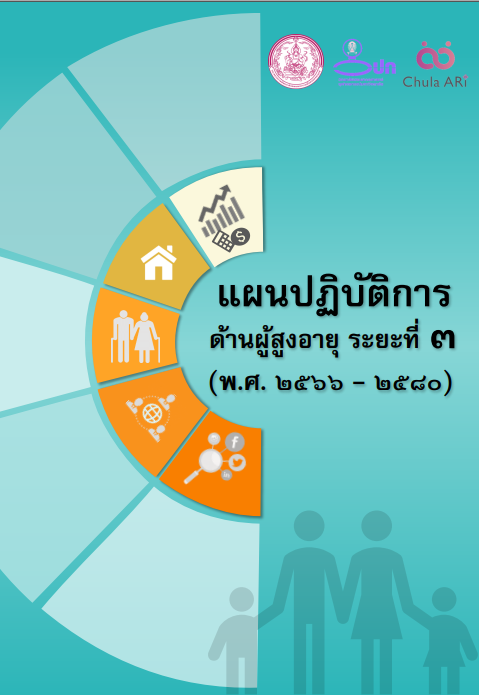In response to the anticipated shift of Thailand into a full-fledged Aged Society by 2024, the State Audit Office (SAO) of Thailand conducted an audit of the National Plan for the Elderly (2002-2024). This audit focused on the inclusivity of the plan's implementation, particularly regarding the integration and preparedness of various government sectors and local administrative organizations. The audit assessed how well the plan addressed the needs of the elderly population and whether it adhered to the equity criteria of the Sustainable Development Goals (SDGs), specifically SDG 10 (Reduced Inequality) and SDG 3 (Good Health and Well-being).
Background
Thailand's aging population poses significant challenges to the nation’s social, economic, and healthcare systems. The National Plan for the Elderly was established to address these challenges by promoting the well-being of older adults, ensuring their access to essential services, and integrating their needs into broader national policies. However, the SAO’s audit revealed critical gaps in the plan's implementation, particularly in its ability to meet the equity goals set forth in the SDGs.
Audit Objectives
The primary objectives of the inclusive audit were:
1. To evaluate the effectiveness of the National Plan for the Elderly in promoting equity and inclusivity across all segments of the elderly population.
2. To assess the level of integration and cooperation among various government agencies and local organizations in implementing the plan.
3. To identify barriers to the plan’s successful implementation and provide recommendations to ensure its alignment with the equity criteria of SDG audits.
Key Findings
1. Lack of Integrated Implementation:
The audit revealed that the implementation of the National Plan for the Elderly lacked coordination among key stakeholders. While the plan called for comprehensive integration across all sectors, the SAO found that many government agencies and local organizations operated in silos. This fragmentation led to inconsistencies in service delivery and a failure to meet the diverse needs of the elderly population.
2. Gaps in Action Plans at the Provincial Level:
Only a limited number of provinces had developed specific action plans to support the National Plan for the Elderly. Moreover, those that did have action plans lacked a clear framework for execution, making it difficult to track progress and measure outcomes effectively.
3. Inadequate Awareness and Training:
The audit highlighted that many local administrative units and government officials lacked adequate awareness and understanding of the National Plan for the Elderly. This gap in knowledge impeded the effective translation of the plan into actionable policies and services, particularly in rural and underserved areas.
4. Delays in Plan Updates:
The audit also found that updates to the National Plan for the Elderly were delayed, with critical revisions not being approved in a timely manner. This delay meant that the plan did not keep pace with the rapidly changing demographics and evolving needs of the elderly population, undermining its relevance and effectiveness.
Constructive Recommendations
Based on the audit findings, the SAO made several recommendations to enhance the inclusivity and effectiveness of the National Plan for the Elderly:
1. Enhance Coordination and Integration:
The SAO recommended that the government establish a centralized coordinating body to oversee the implementation of the National Plan for the Elderly. This body would ensure that all relevant agencies and local organizations work together seamlessly to deliver integrated services to the elderly.
2. Develop Comprehensive Action Plans:
The audit emphasized the need for all provinces to develop and implement comprehensive action plans that align with the National Plan for the Elderly. These action plans should include specific, measurable objectives and timelines to ensure that the needs of the elderly are met in a consistent and equitable manner.
3. Increase Awareness and Training:
To address the knowledge gap among government officials and local administrative units, the SAO recommended the implementation of targeted training programs. These programs would educate key stakeholders on the goals and requirements of the National Plan for the Elderly, as well as the importance of equity and inclusivity in its implementation.
4. Accelerate Plan Updates:
The SAO urged the government to expedite the process of updating the National Plan for the Elderly to ensure that it remains current and responsive to the needs of the aging population. Regular reviews and updates should be conducted to align the plan with emerging challenges and opportunities.
Finally, the inclusive audit conducted by the SAO of Thailand underscores the importance of ensuring that national policies, such as the National Plan for the Elderly, are implemented in a way that is both equitable and inclusive. By addressing the gaps identified in the audit, Thailand can better prepare for its transition to an Aged Society, ensuring that all elderly citizens, regardless of their background or location, have access to the services and support they need to live healthy, fulfilling lives. The findings and recommendations from this audit serve as a valuable example for other countries facing similar demographic challenges and striving to meet the equity criteria of the SDGs.
Dr. Sutthi Suntharanurak

